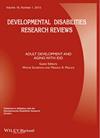下载PDF
{"title":"响应家属对神经发育障碍未经证实的干预措施的要求:脑瘫高压氧“治疗”和干细胞“治疗”","authors":"Emily Bell, Tessa Wallace, Isabelle Chouinard, Michael Shevell, Eric Racine","doi":"10.1002/ddrr.134","DOIUrl":null,"url":null,"abstract":"<p>Faced with the limitations of currently available mainstream medical treatments and interventions, parents of children with neurodevelopmental disorders often seek information about unproven interventions. These interventions frequently have undetermined efficacy and uncertain safety profiles. In this article, we present a general background and case vignettes that highlight the use of hyperbaric oxygen chambers and stem cells in cerebral palsy, the leading cause of pediatric physical disability. We then review the current evidence about these interventions as exemplars of unproven therapies. Building on the background and cases, we explore and review two important questions related to unproven interventions: (1) How should clinicians respond to requests for innovative and alternative interventions? (2) What should clinicians keep in mind when such requests come from online sources? © 2012 Wiley Periodicals, Inc. Dev Disabil Res Rev 2011; 17:19–26.</p>","PeriodicalId":55176,"journal":{"name":"Developmental Disabilities Research Reviews","volume":"17 1","pages":"19-26"},"PeriodicalIF":0.0000,"publicationDate":"2012-03-23","publicationTypes":"Journal Article","fieldsOfStudy":null,"isOpenAccess":false,"openAccessPdf":"https://sci-hub-pdf.com/10.1002/ddrr.134","citationCount":"13","resultStr":"{\"title\":\"Responding to requests of families for unproven interventions in neurodevelopmental disorders: Hyperbaric oxygen “treatment” and stem cell “therapy” in cerebral palsy\",\"authors\":\"Emily Bell, Tessa Wallace, Isabelle Chouinard, Michael Shevell, Eric Racine\",\"doi\":\"10.1002/ddrr.134\",\"DOIUrl\":null,\"url\":null,\"abstract\":\"<p>Faced with the limitations of currently available mainstream medical treatments and interventions, parents of children with neurodevelopmental disorders often seek information about unproven interventions. These interventions frequently have undetermined efficacy and uncertain safety profiles. In this article, we present a general background and case vignettes that highlight the use of hyperbaric oxygen chambers and stem cells in cerebral palsy, the leading cause of pediatric physical disability. We then review the current evidence about these interventions as exemplars of unproven therapies. Building on the background and cases, we explore and review two important questions related to unproven interventions: (1) How should clinicians respond to requests for innovative and alternative interventions? (2) What should clinicians keep in mind when such requests come from online sources? © 2012 Wiley Periodicals, Inc. Dev Disabil Res Rev 2011; 17:19–26.</p>\",\"PeriodicalId\":55176,\"journal\":{\"name\":\"Developmental Disabilities Research Reviews\",\"volume\":\"17 1\",\"pages\":\"19-26\"},\"PeriodicalIF\":0.0000,\"publicationDate\":\"2012-03-23\",\"publicationTypes\":\"Journal Article\",\"fieldsOfStudy\":null,\"isOpenAccess\":false,\"openAccessPdf\":\"https://sci-hub-pdf.com/10.1002/ddrr.134\",\"citationCount\":\"13\",\"resultStr\":null,\"platform\":\"Semanticscholar\",\"paperid\":null,\"PeriodicalName\":\"Developmental Disabilities Research Reviews\",\"FirstCategoryId\":\"1085\",\"ListUrlMain\":\"https://onlinelibrary.wiley.com/doi/10.1002/ddrr.134\",\"RegionNum\":0,\"RegionCategory\":null,\"ArticlePicture\":[],\"TitleCN\":null,\"AbstractTextCN\":null,\"PMCID\":null,\"EPubDate\":\"\",\"PubModel\":\"\",\"JCR\":\"\",\"JCRName\":\"\",\"Score\":null,\"Total\":0}","platform":"Semanticscholar","paperid":null,"PeriodicalName":"Developmental Disabilities Research Reviews","FirstCategoryId":"1085","ListUrlMain":"https://onlinelibrary.wiley.com/doi/10.1002/ddrr.134","RegionNum":0,"RegionCategory":null,"ArticlePicture":[],"TitleCN":null,"AbstractTextCN":null,"PMCID":null,"EPubDate":"","PubModel":"","JCR":"","JCRName":"","Score":null,"Total":0}
引用次数: 13
引用
批量引用

 求助内容:
求助内容: 应助结果提醒方式:
应助结果提醒方式:


